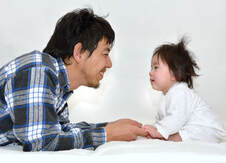Halloween Books & Activities For Young Children
We know all the holidays will look different this year. But, holidays and seasons are still a great way to incorporate new vocabulary and build your child’s language skills! Read more below about a few Halloween themed books for different ages and the fun ways you can interactively read with your child. We’ve also shared a few of ur favorite easy and inexpensive themed-activities for you and your child to do at home!
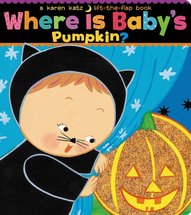
Where is Baby’s Pumpkin?: In this book Baby is looking for her pumpkin and you have to help her find it! This book is great for working on everyday, common vocabulary (e.g., things around your home), yes/no questions, simple WH-questions (what, where, who) and also prepositions (e.g., “Is it under the table?” or “Show me what is on the table.” or “What is next to the table?”, etc).
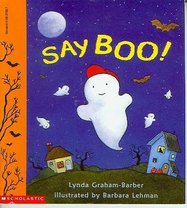
Say Boo!: Ghosts are suppose to say “boo!”, but in this book one ghost is having a hard time with that. This book is short and sweet and great for simple vocabulary building.
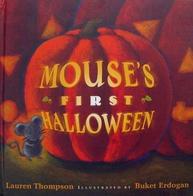
Mouse’s First Halloween: In this book Mouse has a pretty adventurous Halloween night. He sees and hears a lot of different things that seem spooky or scary at first, but turn out to just be things we see during Halloween. This book is great for early, simple inferencing and prediction skills, as well as, vocabulary.
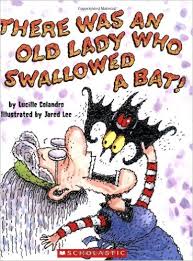
There Was an Old Lady Who Swallowed a Bat: There are a lot of different “Old Lady Who Swallowed a….” books. These books are silly and fun and good for recalling details in sequential order (e.g., the items she swallows) and vocabulary.
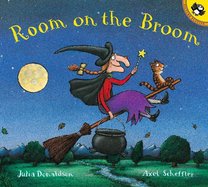
Room On the Broom: This is a great book for rhyming, comprehension, and inferences. The witch keeps losing things from her broom and when a dragon shows up, her animal friends have to help her out.
Halloween Related Activities to Try at Home!
You can also do short, fun, holiday-themed activities at home with your child to work on building their vocabulary and language skills. Here are a few easy and inexpensive ideas:
- Decorating Pumpkins: Many kids don’t know what a jack-o-lantern is (we describe it as what you see after you carve a pumpkin), so it’s a good idea to start with that. Jack-o-lantern faces provide an easy way to help your child identify and label emotions and feelings. You can draw out a bunch of faces first and have you child point to the happy/excited/scared/angry/etc face and then have them tell you which one they want.
- Sorting: If you have Halloween paraphernalia you can use this to sort! Pre-covid times, we were big fans of the Dollar Spot at Target. They often had stickers, pencil toppers, and window stickers with a Halloween theme. These are perfect to have your child sort for different concepts (e.g., “Find all the pumpkins” or “Find all the orange things”).
- Treasure Hunt: You can use all the same items from the sorting activity for a treasure hunt. Hide items around the house and describe where to find specific items (e.g., “Look under the bed in mommy’s room”) and when your child finds them all, have them describe what they found.
These are just a few ideas, but maybe you have some other ideas or activities you already do with your child. Feel free to share your ideas in the comments section for others to try out too!

 When it comes to your child’s speech and language development, they may not always know best. At The Speech Space, we are lucky to collaborate with some great pediatricians and developmental pediatricians. However, this is not always the case. It’s not uncommon for us to hear that someone’s pediatrician recommended a “wait and see” approach. Unfortunately this is not always the best approach– especially if some red flags for speech and/or language issues are present already. For instance, if your child is 15 months old and has not yet started talking, this is a major red flag and a “wait and see” approach may not be beneficial for your child. Beginning therapy as early as possible is aways recommended to help more easily build up a child’s skills and to close the gap with their same-aged peers.
When it comes to your child’s speech and language development, they may not always know best. At The Speech Space, we are lucky to collaborate with some great pediatricians and developmental pediatricians. However, this is not always the case. It’s not uncommon for us to hear that someone’s pediatrician recommended a “wait and see” approach. Unfortunately this is not always the best approach– especially if some red flags for speech and/or language issues are present already. For instance, if your child is 15 months old and has not yet started talking, this is a major red flag and a “wait and see” approach may not be beneficial for your child. Beginning therapy as early as possible is aways recommended to help more easily build up a child’s skills and to close the gap with their same-aged peers.
